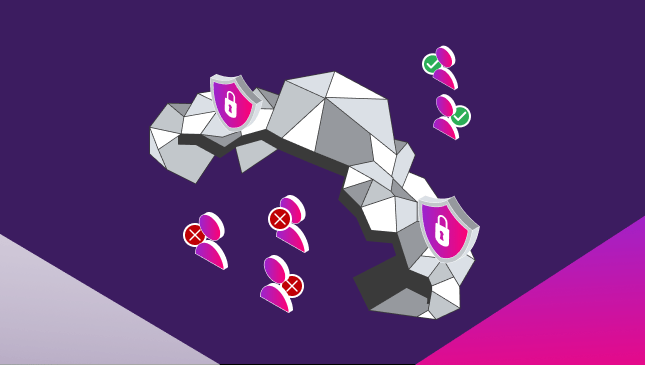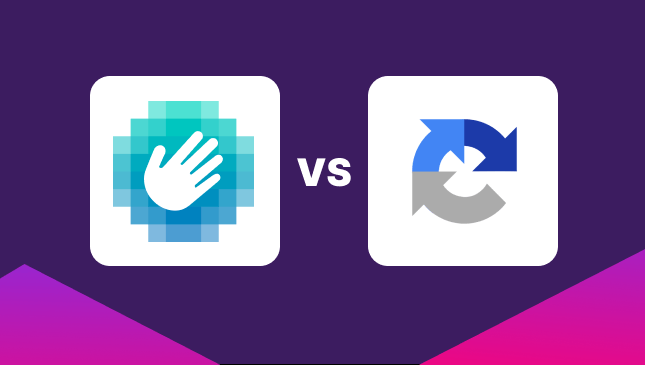How to Block Botnet Attacks on Your Website
Natan Golden
|Website Ops & Security | August 31, 2022

Post-Covid-19, the world prefers to shop and work online, with 67% of consumers admitting they shop more online since the pandemic.
With this significant increase in demand for internet products and services also comes a significant problem that’s getting worse by the day: cyber crime, specifically bot and botnet attacks on websites.
This menace is causing business owners sleepless nights, wreaking havoc on their websites, and driving up operating costs.
In this piece, I’ll walk you through the problem, explaining the challenges it poses, as well as potential solutions.
What is a botnet?
A network of remotely linked bots is referred to as a botnet.
Bots are autonomous computer software programmed to do specific, often repetitive tasks. In the past, bots have often been simple and designed for a single specific purpose on a large scale. However, modern bots can be more complex and capable of performing multiple tasks or even learning and improving their processes using machine learning.
The tasks can range from sending simple messages, for example, spam, to performing credit card fraud or attempting to login into databases using brute force attacks.
Bad bots are designed to identify and exploit vulnerabilities in any network, cause damage as instructed, and are often linked together in a remote network, referred to as a botnet. These botnets can be coordinated by unscrupulous criminals to carry out different types of botnet attacks on websites of all forms and uses.
What are bad bots? Click here to find out more.
How are bots created?
The code for bots is often readily available online, with certain types of standard bots available for free from GitHub or other online repositories. Most developers learning code will build a bot at least once in their coding journey, as they can be quite simple and satisfying to create.
Developers with malicious intent can easily customize a bot to perform any necessary task. In fact, hiring a developer to create bad bots is easily done with various online job platforms, giving access to cheap devs.
How is a botnet created?
Most botnets are created by using viruses or trojans to spread a digital infection to multiple devices around the world. They might be inserted into apps or browser extensions, which are then downloaded thousands of times. Or the code for a bot might also be embedded in a free software or video streaming site, which then embeds itself into the user’s device while they’re watching their pirated Netflix shows.
The malware code can even be disguised as commonplace items like photographs or links to a website that discreetly downloads and installs malware when clicked.
This botnet can then be made available to anyone who wants to access it, often for a reasonable fee. For example, someone wishing to carry out a DDoS botnet attack might hire an online team with access to a botnet such as Mirai.
Bad and good bots
Bots are not entirely bad, though. Making up 60% of all traffic on the internet, many are employed for good, almost as if they were a personal assistant. They can be used to execute tasks at high speeds that would be impossible to achieve with human effort and at larger scales.
However, it is estimated that 39% of bots are created for malicious purposes. From data theft and spam to ransomware and the proliferation of viruses, bad bots are no longer a niche concern.
This explains why more businesses are dedicating more resources to cybersecurity solutions in order to protect their websites from dangerous bots and malware. Bots will seek out and take advantage of the smallest vulnerability and can cause huge damage to internet-based businesses.
How does a botnet attack websites?
Bots come with different missions and can perform a variety of tasks, especially as part of an expanded botnet. Others come with the sole intention of scraping data from a website, while others may go as far as taking over other users’ accounts or inserting malware into the website’s code.
Here are some of the most common ways bad bots may attack a website after identifying vulnerabilities.
Site scraping
From stealing your website content or scraping your emails (to spam the crap out of you); to digging into your inventory or customer database – scraping is a problem for many site owners.
The more sophisticated bots can scrape an entire catalog in seconds. This data can be used to spoof or copy your site and steal your customers.
DDoS attacks
One of the most damaging forms of botnet attack is the Distributed Denial of Service, or DDoS attack. This is where a botnet overwhelms a website’s bandwidth or capacity, causing it to fail.
By bringing the site down, other vulnerabilities can be exploited, such as stealing data or inserting viral elements such as ransomware. DDoS attacks can also be used to simply disrupt a business.
‘Carting’ products from the inventory without actually buying
Bots can be instructed to add products to the cart and not proceed to checkout. Given that thousands of bots can attack a website at once, this could cause a misleading shortage of a product to legitimate consumers, resulting in a full inventory and low sales for the company.
SEO spam
With the intention of inflating the SEO metrics of a target website, fraudulent digital marketers use a botnet attack to insert backlinks without a website owner’s consent or knowledge. SEO spam is a black hat SEO practice that might lead to positive results for the scammer in the short term but can be devastating to the site owner.
It’s also not a sustainable SEO strategy, as the practice of inserting and cloaking links invariably results in a Google penalty.
Scalping
This is where bots are deployed to buy in-high-demand products with limited supply, stockpile them until they’re no longer available, and then sell them at a much higher price. This is especially common with sneakers, which is why these bots are often called ‘sneaker bots.’
Another popular target is event tickets and newly released tech (think: iPhones, games consoles, etc.). If you’ve ever missed out on a festival ticket or new game for kids, even though they just came out, you were probably competing with scalping bots.
Click fraud and ad fraud
This is one of the most common uses of botnets on the internet. Here, competitors use bots to engage with a company’s paid ads in order to force the company to stretch its advertising budget or discontinue advertising owing to excessive costs.
This mostly affects pay-per-click advertising, as the company is forced to pay for site visits and ad clicks that do not result in sales or new clients.
Click fraud and ad fraud have been found to cost marketers around $40 billion per year, with the problem increasing annually.
Check out our complete guide to click fraud…
How to block botnets
With the advancements in technology, it’s harder than ever to outsmart hackers and their botnets. The bots have mutated and are armed with sophisticated code to ensure they execute their instructions with maximum efficiency. They are programmed to exploit even the smallest design flaws in a website.
It becomes even more difficult to combat bots when they have access to a large number of IP addresses. This makes it more difficult to distinguish genuine buyers from bots.
Staying ahead of bots and avoiding botnet attacks might seem overwhelming at first. But here are some ways you can try to zap those bots before they cause a problem for you.
Update your software regularly
With regular changes to how bots operate, keeping your software up to date is also important. By ensuring you have the latest security patches, botnets are less likely to break through the vulnerabilities.
For website owners, this means updating your CMS platform and any plugins you may use.
Use complex passwords
Brute force attacks are one of the most common forms of database breach by botnet attacks. To make it harder for hackers, make sure your password is super complex.
This means a mixture of upper and lower case letters, numbers, and symbols and avoiding recognisable words or number sequences.
Seriously, if your password is ‘password’ or ‘admin,’ you might as well just invite the botnets in for a digital lunch to feast on your data.
Block bots with software
Using software to avoid bot breaches and botnet attacks is increasingly essential to the modern business owner. And, with many websites built on sites like WordPress or Shopify, hackers increasingly target these sites as they are popular and often riddled with vulnerabilities.
CHEQ offers a comprehensive bot-blocking suite for both paid and organic traffic. Stop bots from engaging with your paid links on Google Ads or Facebook Ads, and also stop organic or direct botnet attacks on your WordPress site.
Try out CHEQ for free to check your site traffic and see who really visits your website.










